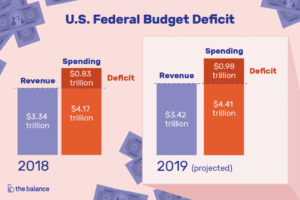Citizens who are getting very involved in the predictable debacle of the Trump administration should also be reminded that the U.S. is currently involved in at least four covert wars and more secret wars, perhaps in South America and the Middle East.
 Wars seem to be an essential element of U.S. foreign and domestic policies. A key element of Trump’s message to his followers is military strength, supposed military weakness, the need for a larger military budget, revamping the Veteran’s administration, and the need for more military research and nuclear arms. In short, there is no military-related request that Trump, the Republicans and his followers would turn down, even when the Pentagon itself says it does not need the hardware Trump’s party is presenting.
Wars seem to be an essential element of U.S. foreign and domestic policies. A key element of Trump’s message to his followers is military strength, supposed military weakness, the need for a larger military budget, revamping the Veteran’s administration, and the need for more military research and nuclear arms. In short, there is no military-related request that Trump, the Republicans and his followers would turn down, even when the Pentagon itself says it does not need the hardware Trump’s party is presenting.
So when people get diverted about the need for a border wall, the invading caravans of women and children, and rising crime from non-American intruders, there are more important things to think about. Citizens should ask: Why did all these covert (openly waged) wars happen, who was the enemy, what benefit did these wars return, and how much did these wars cost in money and lives?
The following list of wars involving the U.S. starts with the Korean War. This was a war that was supposed to end the expansion of Communist China. It obviously failed. Today, the Chinese own about $1.1 trillion in U.S. Treasury securities and are a major global economic engine. They also are now the major investor in the U.S. So much for being enemies.
So, when the TV commentators are talking about the wall or the investigation into Trump’s self-serving business dealing, here is something else to think about: The United States has been in an almost constant war footing since 2001. This has come at a cost conservatively estimated at some 2.586 million civilian and military lives. 
More Wars Means Less for U.S. Citizens
It is also important to remember that wars are expensive. The Iraq War cost $1.6 trillion and was supposed to pay for itself by commandeering Iraq’s oil fields, at least that was Vice President Dick Cheney’s cover story at the time the war was being planned. (Note: these wars do not include the cost of U.S. veteran’s health care benefits and other war-related benefits.) These wars and their essential increases in taxes on the middle class are all largely responsible for the nation’s budget deficit for fiscal year 2019 of $985 billion. This is an 18% increase over 2018.
The tax increases from Ronald Reagan, George Bush II and Trump have all increased the deficit. They also all happened during periods of war as tax cuts were given to wealthy Americans.
So the next time you hear the commentators talking about the wall and why it is needed for a “national emergency,” remember America’s wars and try to remember why they were waged in the first place. Better yet, see if you were better off financially, socially, or morally after the wars ended.
Our Favorite U.S. Wars
| Name of War ∨ ∧ | Years ∨ ∧ | Fatalities | |
| Yemeni Civil War | 2009 – 2017 | 19,406 | |
| Iraqi Insurgency | 2004 – 2017 | 17,198 | |
| al-Qaida vs USA and allies | 2001 – 2017 | 8,593 | |
| Afghanistan war | 2001 – 2017 | 130,807 | |
| Iraq vs US led coalition (2003-2011)* | 2003 – 2003 | 7,927 | |
| First Gulf War | 1990 – 1991 | 23,946 | |
| Lebanese Civil War | 1975 – 1990 | 132,518 | |
| Panama Coup and US Invasion | 1989 – 1989 | 920 | |
| Vietnam War | 1965 – 1975 | 2,048,050 | |
| Laos Civil War | 1959 – 1973 | 21,500 | |
| Dominican Republic Coup | 1965 – 1965 | 4,027 | |
| Congo Crisis | 1960 – 1965 | 7,175 | |
| Vietnam Civil War | 1955 – 1964 | 164,923 | |
| Indonesia vs PRRI, Permesta and Darul Islam | 1953 – 1961 | 33,965 | |
| Taiwan Strait Crisis | 1949 – 1954 | 10,025 | |
| Korean War | 1949 – 1953 | 995,025 |
Source: The Polynational War Memorial. * This war date comes from The Balance.











